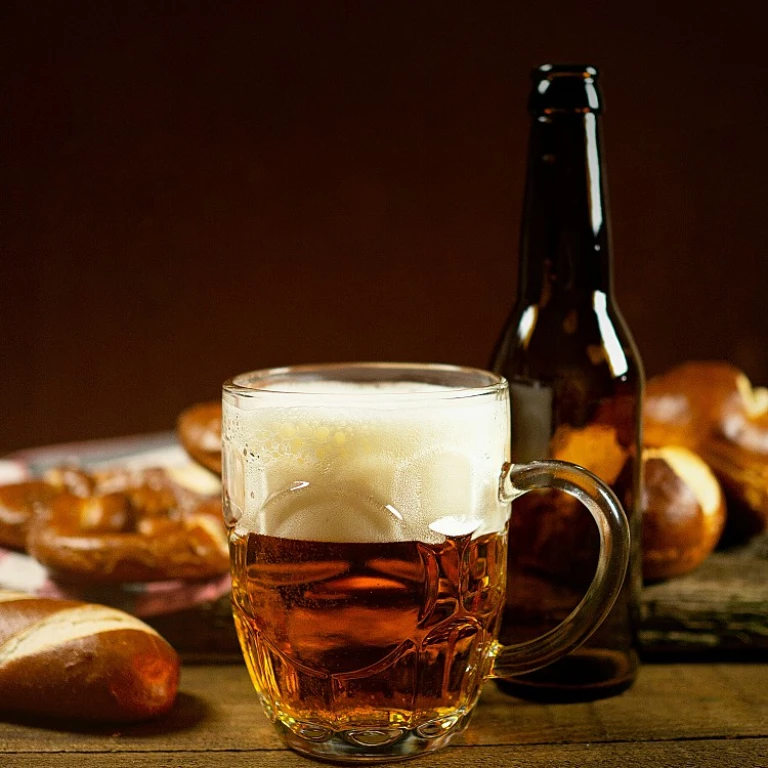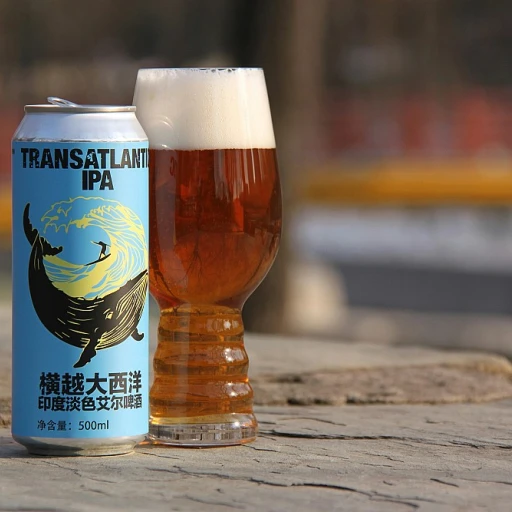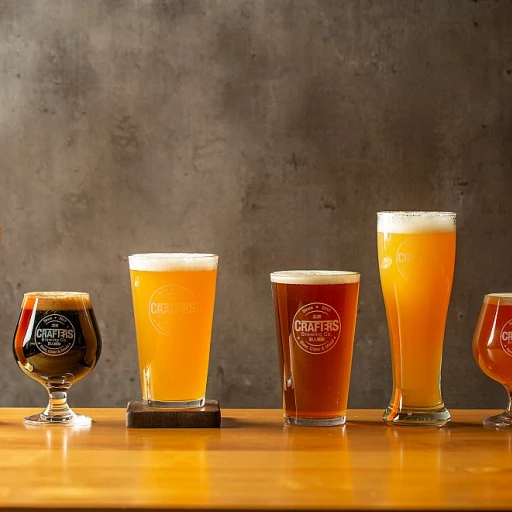Exploring the Depths of Dark Beers
The Bold World of Strong Dark Brews
Strong dark brews are an intriguing segment of the beer world, offering a unique depth that isn't quite captured by their paler counterparts. These rich beers carry with them a history that is as profound as the flavors they present. From the thick stouts that warm you on a chilly night to the complex porters that require an experienced palate to fully appreciate, the world of dark brews is as vast as it is inviting. Stepping into this world, one encounters flavors ranging from sweet, roasted malts to hints of chocolate and coffee, sometimes with a smoky undertone. Each pour presents a promise of adventure, inviting you to explore both traditional recipes and innovative new brews crafted by creative microbreweries. For those who appreciate the allure of rich stouts, an Irish pub menu featuring stouts could offer a transformative culinary experience. Understanding the essence of these beers is much like learning about their history and the brewing techniques involved. Delving into their past uncovers a story that dates back centuries, where these dark elixirs were savored by many for their full-bodied taste and nourishing qualities. The tradition continues today, with modern brewers both maintaining classic techniques and embracing cutting-edge practices to create unique variations. As you continue reading, you'll uncover what makes these beers so distinct in terms of taste, the meticulous methods used in their crafting, and how they pair exquisitely with a variety of foods.Tasting Notes: What to Expect
Unraveling Flavor Profiles
Diving into a pint of rich and robust dark beer is akin to embarking on a delectable flavor journey. With each sip, you might experience an array of notes that span from sweet to slightly bitter, all mingling in perfect harmony. This complexity is what draws enthusiasts to explore the allure of these beers.
Sweeter Nuances: Dark beers often exhibit sweet flavors due to the roasted malts used in brewing. Melanoidins, compounds formed during the Maillard reaction, bring out hints of caramel, toffee, chocolate, or molasses, creating a rich sweetness that's balanced by other elements.
Roasted and Smoky Layers: One characteristic standout in strong dark beers is their roasted flavor profile. The degree of roast can vary and introduce notes of coffee or dark chocolate, adding depth to the beer.
Bitterness and Balance: Dark beers can have a degree of bitterness, often balanced by the sweetness of the malt. Some beers might feature additional ingredients such as cocoa nibs or coffee beans, elevating bitterness and complexity.
Additional Notes: Depending on the specific variety and brewing process, drinkers may also detect subtle hints of nuts, licorice, or dried fruits like figs or raisins, which contribute to the beer’s sophisticated palate.
Pairing dark beers with food can enhance and complement these flavors, making it a delightful experience worth exploring further. To dive deeper into flavors that complement stout beers, you'll find the multitude of options to enhance your tasting experiences.
Brewing Techniques and Ingredients
Key Elements in Crafting Dark Beer
The art of brewing rich and robust dark beers involves a careful selection of ingredients and techniques. At the core of these tantalizing brews are malted grains, which provide the beer with its signature dark hue and complex flavor profile. Brewers often use roasted malts to achieve the desired color and taste, with options like Munich malt, chocolate malt, and black malt enhancing the beer's depth and richness.
Another crucial element for crafting dark beers is the use of specialty grains. These add layers of flavor, including hints of chocolate, coffee, caramel, and nuts. In some cases, adjuncts like molasses or brown sugar may be added to elevate sweetness and alcohol content, resulting in a more warming experience.
When it comes to the brewing process, prolonged boiling times can intensify flavors and aromas. Utilizing open fermentation tanks allows the yeast to interact with air, creating unique and desired taste profiles. Moreover, brewers can incorporate a variety of hops to balance the maltiness and add a subtle bitterness.
For a deeper understanding of how hops play a role in beer creation, you might find related brewing practices intriguing.
Popular Varieties and Brands
Popular Dark Beers Everyone Should Know
There is a wide range of renowned dark beers around the world, each offering its own unique twist on this rich style. Here's a look at some popular varieties and their standout characteristics:- Porter: Originating in London, porters are medium-bodied beers with flavors ranging from chocolate to caramel. A classic and beloved example is the Breckenridge Vanilla Porter, which infuses vanilla for a distinct depth. You can explore more about this intriguing beer here.
- Stout: Known for their robust profile, stouts are often creamy and roasted, with hints of coffee or chocolate. This category includes the well-loved Irish stout, perfect for those craving a bold taste.
- Schwarzbier: This German black lager offers a smooth, light-bodied experience with mild roasted notes, making it a very drinkable dark beer that's not too heavy.
- Baltic Porter: A cross between a porter and a stout, this beer style is typically rich, offering notes of caramel, toffee, and even dark fruit.
- Imperial Stout: Known for their high alcohol content and full-bodied nature, imperial stouts boast intense flavors like dark chocolate, coffee, and molasses.
Pairing Dark Beers with Food
Enhancing Your Dining Experience
Dark beers, with their rich and robust flavors, make excellent companions for a variety of dishes. Their depth and complexity can complement and enhance the flavors of food in delightful ways. Here are some pairing suggestions to elevate your dining experience:
- Hearty stews and meats: Bold dark beers pair wonderfully with dishes like beef stew, braised short ribs, and roast pork. The beer's maltiness complements the savory, umami flavors of the meat, while its robustness can stand up to rich gravies and sauces.
- Bold cheeses: Dark beers go hand in hand with bold, creamy cheeses like blue cheese, aged cheddar, or gouda. The richness of the beer balances the sharpness of the cheese, creating a harmonious blend of flavors.
- Chocolate and desserts: For a sweet treat, consider pairing a rich chocolate cake, brownies, or a dessert with caramel or coffee flavors with a dark beer. The beer's roasted malt notes amplify the dessert's sweetness, creating a decadent taste sensation.
- Grilled and barbecued foods: The charred flavors of grilled meats, such as ribs or burgers, are beautifully enhanced by the smoky and roasted qualities of dark beers. The beer's intensity cuts through the richness of the grill, adding depth to every bite.
Experimenting with these pairings can truly showcase the versatility and allure of dark beers, enhancing both the meal and the drink. Remember that the key to a great pairing lies in finding balance and complementarity between the flavors of the food and the beer.





